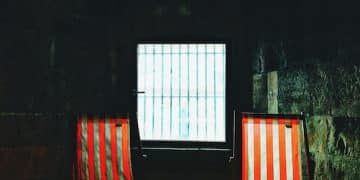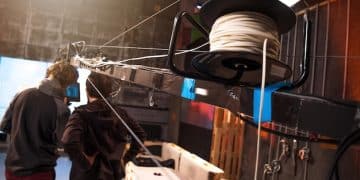The Power of Sound: Elevating Movies with Music and Design
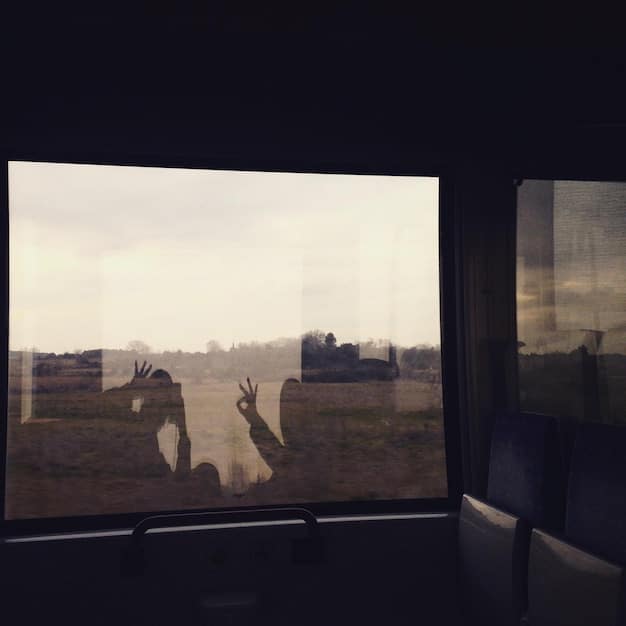
The power of sound design and music in film significantly enhances the audience’s emotional experience, heightens suspense, and deepens their connection to the narrative, creating a more immersive and memorable cinematic journey.
Have you ever noticed how certain sounds in a movie make your heart race or tears well up in your eyes? That’s the **power of sound: how music and sound design elevate the movie experience**. These elements are not just background noise; they’re crucial tools that filmmakers use to craft unforgettable moments.
Understanding Sound Design in Film
Sound design is more than just recording dialogue and adding background noise. It’s the art of creating the entire aural landscape of a film, from the subtle rustling of leaves to the earth-shattering roar of an explosion. Understanding the nuances of sound design is key to appreciating the full cinematic experience.
Effective sound design can make a movie more believable, even if the visuals are fantastical. It can create a sense of realism, immerse the audience in the story, and manipulate their emotions without them even realizing it. Let’s dive deeper into what makes sound design so effective.
The Role of Foley Artists
Foley artists are the unsung heroes of sound design. They recreate everyday sounds in a studio to enhance the auditory experience of a film. These sounds range from footsteps to the clinking of glasses, adding layers of realism that might otherwise be missed.
Without Foley artists, many films would lack the tactile and visceral qualities that make them engaging. Their work is crucial in creating a believable and immersive soundscape.
Ambience and Sound Effects
Ambience refers to the background sounds that create a sense of place. Sound effects, on the other hand, are specific sounds that accompany actions or events on screen. Together, they build a comprehensive auditory environment.
- Ambience: Creates the atmosphere of a scene (e.g., city noise, forest sounds).
- Sound Effects: Emphasize specific actions (e.g., gunshots, car crashes).
- Layering: Combining multiple sounds to create a richer, more complex auditory experience.
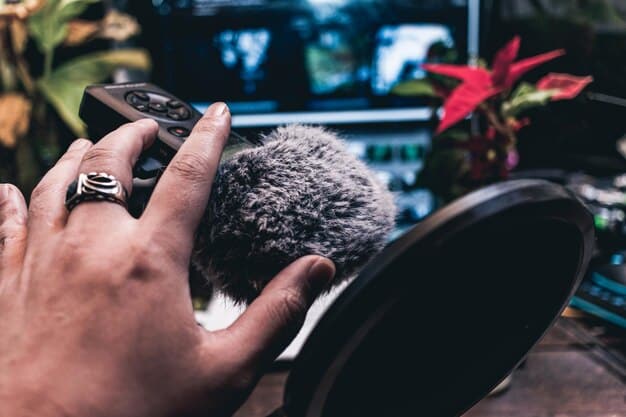
Ultimately, sound design is an integral part of filmmaking, shaping how we perceive and experience the story. It’s a craft that requires creativity, technical skill, and a deep understanding of how sound affects the human psyche.
The Magic of Film Scores and Soundtracks
Music is a powerful storytelling tool in film. A well-composed score can amplify emotions, foreshadow events, and provide a deeper connection to the characters. Understanding how music is used in film can greatly enhance your appreciation of the art form.
Film scores and soundtracks are carefully crafted to complement the visuals and narrative. They can evoke feelings of joy, sadness, fear, or excitement, often without the viewer consciously realizing it. Let’s explore some of the key elements of film music.
The Power of Leitmotifs
A leitmotif is a recurring musical theme associated with a particular character, place, or idea. These themes can evolve and change as the story progresses, reflecting the development of the character or idea they represent.
John Williams’ scores for the “Star Wars” saga are prime examples of leitmotifs in action. Each major character and concept has its own distinct musical theme that recurs throughout the films.
Diegetic vs. Non-Diegetic Sound
Diegetic sound refers to sounds that originate from within the film’s world, such as dialogue or music from a radio. Non-diegetic sound, on the other hand, is sound that comes from outside the film’s world, such as the film’s score.
- Diegetic Sound: Sounds that characters can hear, grounding the scene in reality.
- Non-Diegetic Sound: Sounds for the audience’s benefit, enhancing the emotional impact.
- Blending: Combining both types of sound to create a cohesive and immersive experience.
In conclusion, the magic of film scores and soundtracks lies in their ability to deepen our emotional connection to the story. They are powerful tools that filmmakers use to enhance the overall cinematic experience and leave a lasting impact on the audience.
Creating Atmosphere Through Sound
Atmosphere in film refers to the overall mood or feeling of a scene. Sound plays a critical role in creating and enhancing this atmosphere, setting the tone for what is to come and influencing how the audience perceives the events on screen.
By carefully manipulating sound, filmmakers can create a sense of tension, mystery, or tranquility. The right sound design can immerse the audience in the scene, making them feel like they are right there with the characters. Let’s see how it’s done.
Sound as a Foreshadowing Tool
Filmmakers often use sound to foreshadow upcoming events, creating a sense of anticipation or dread. This can be as subtle as a low rumbling sound or as overt as a distorted musical cue.
Think about the shark’s theme in “Jaws.” Its ominous presence is felt long before the shark appears on screen, creating a sense of impending doom that keeps the audience on the edge of their seats.
Using Silence Effectively
Silence can be just as powerful as sound in creating atmosphere. A sudden absence of sound can heighten tension, draw attention to a specific moment, or emphasize the isolation of a character.
- Tension: Building suspense by gradually reducing sound.
- Emphasis: Drawing attention to a crucial moment through silence.
- Isolation: Highlighting a character’s solitude by minimizing ambient noise.
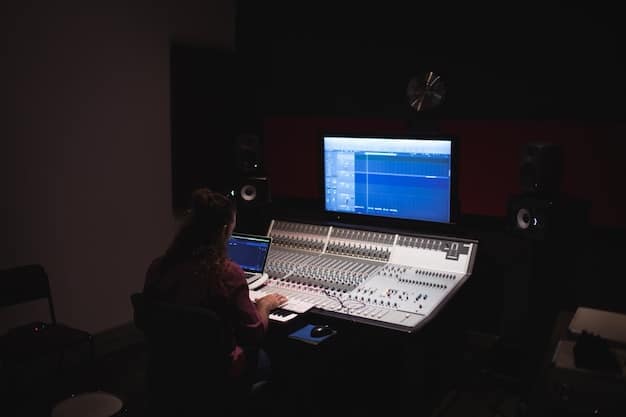
Ultimately, creating atmosphere through sound is a delicate art that requires a deep understanding of how sound affects the human psyche. When done well, it can elevate a film from being merely entertaining to being truly immersive and unforgettable.
Iconic Soundscapes in Film History
Throughout cinema history, certain films have stood out for their innovative and impactful use of sound. These films not only tell great stories but also create unforgettable auditory experiences that have influenced generations of filmmakers and audiences alike.
Exploring these iconic soundscapes can provide valuable insights into the potential of sound in film and inspire a deeper appreciation for the art form. Let’s take a look at some notable examples.
“Apocalypse Now” (1979)
Francis Ford Coppola’s “Apocalypse Now” is renowned for its immersive and visceral sound design. The use of helicopters, jungle sounds, and Wagner’s “Ride of the Valkyries” creates a chaotic and overwhelming auditory landscape that perfectly captures the madness of war.
The film’s sound design, led by Walter Murch, is considered groundbreaking for its use of surround sound and its ability to transport the audience into the heart of the Vietnam War.
“Star Wars” (1977)
George Lucas’s “Star Wars” revolutionized science fiction cinema with its groundbreaking visual effects and equally impressive sound design. The combination of Ben Burtt’s iconic sound effects and John Williams’s memorable score created a universe that felt both fantastical and believable.
- Lightsaber Sounds: Created by combining the sound of a film projector and a television set.
- The Force Theme: A leitmotif that represents the mystical energy field connecting all living things.
- Spaceship Noises: A blend of mechanical and animal sounds to create unique and recognizable spacecraft.
In summary, these films showcase the power of sound to create immersive and unforgettable cinematic experiences. They serve as a testament to the artistry and innovation of sound designers and composers who have shaped the way we experience movies.
Technical Aspects: Mixing and Mastering Sound
The process of mixing and mastering sound in film is a complex and technical one, involving the careful balancing and manipulation of various audio elements to create a cohesive and impactful final product. Understanding these technical aspects can provide a greater appreciation for the artistry involved.
Mixing and mastering are crucial steps in post-production, where sound designers and engineers work together to ensure that the audio is clear, balanced, and emotionally resonant. Let’s explore some of the key techniques and tools used in this process.
Balancing Dialogue, Music, and Effects
One of the primary goals of sound mixing is to achieve a proper balance between dialogue, music, and sound effects. Dialogue should be clear and intelligible, while music and effects should enhance the emotional impact without overpowering the spoken words.
This requires careful attention to levels, equalization, and dynamics, as well as a good understanding of how different sounds interact with each other.
Using Equalization and Compression
Equalization (EQ) is the process of adjusting the frequency content of a sound to shape its tonal characteristics. Compression is used to reduce the dynamic range of a sound, making it louder and more consistent.
- Equalization: Shaping the tonal characteristics of individual sounds.
- Compression: Reducing the dynamic range for greater loudness and consistency.
- Automation: Using software to automate changes in levels and effects over time.
In conclusion, the technical aspects of mixing and mastering sound in film are essential for creating a polished and professional final product. They require a combination of technical expertise, artistic sensibility, and a deep understanding of how sound affects the audience’s experience.
How Sound Impacts the Viewer Emotionally
Sound has the power to evoke a wide range of emotions in viewers, often without them consciously realizing it. From the thrill of a high-speed chase to the heartbreak of a tragic love story, sound plays a crucial role in shaping the emotional landscape of a film.
Understanding how sound affects emotions can help filmmakers create more engaging and impactful narratives. Let’s explore some of the ways in which sound is used to manipulate and enhance emotions.
Creating Suspense and Tension
Sound is a powerful tool for creating suspense and tension in thrillers and horror films. By gradually increasing the volume and intensity of certain sounds, filmmakers can create a sense of impending doom that keeps the audience on the edge of their seats.
The use of silence can also be effective in creating tension, as a sudden absence of sound can heighten the anticipation of something scary or unexpected.
Enhancing Emotional Moments with Music
Music is often used to enhance emotional moments in film, amplifying feelings of joy, sadness, love, or anger. A well-placed musical cue can deepen the audience’s connection to the characters and make the story more emotionally resonant.
- Joy: Uplifting and energetic music.
- Sadness: Melancholic and somber tones.
- Love: Tender and romantic melodies.
The Future of Sound in Cinema
As technology continues to evolve, the future of sound in cinema holds exciting possibilities for creating even more immersive and engaging experiences. From advancements in surround sound technology to the use of artificial intelligence, the potential for innovation is limitless.
Exploring these future trends can provide a glimpse into the exciting possibilities that lie ahead for sound design and music in film. Let’s take a look at some of the key developments that are shaping the future of sound.
Immersive Audio Formats
Immersive audio formats, such as Dolby Atmos and DTS:X, are revolutionizing the way we experience sound in the cinema. These formats allow for greater precision and flexibility in sound placement, creating a more three-dimensional and enveloping auditory landscape.
By placing sounds not only around the listener but also above and below, immersive audio formats create a more realistic and engaging experience that draws the audience deeper into the story.
AI and Sound Design
Artificial intelligence (AI) is beginning to play a role in sound design, with tools that can automatically generate sound effects, analyze audio, and even compose music. While AI is unlikely to replace human sound designers and composers anytime soon, it has the potential to augment their creativity and streamline their workflows.
- Sound Effect Generation: AI tools that can create custom sound effects based on specific parameters.
- Audio Analysis: AI algorithms that can automatically analyze audio content and identify potential issues or opportunities for improvement.
- Music Composition: AI systems that can generate original music scores based on a variety of inputs, such as the film’s visuals or narrative themes.
| Key Point | Brief Description |
|---|---|
| 🎬 Immersive soundscapes | Sound design enhances movie experience, creating a visceral journey. |
| 🎶 Film scores | Music intensifies emotions, foreshadows plot, connecting viewers to characters. |
| 📢 Foley artists | They recreate everyday sounds to add realism to film’s audio. |
| 🎧 Technical aspects | Mixing and mastering balance audio, to create a polished product. |
Frequently Asked Questions
▼
A sound designer is responsible for creating the overall sonic environment of a film, including recording dialogue, creating sound effects, and incorporating music, to enhance the viewing experience.
▼
Music intensifies emotions, foreshadows events, and connects viewers to characters by creating a deeper emotional landscape. A well-composed score adds depth and resonance.
▼
Foley artists recreate everyday sounds in a studio to add realism and depth to a film’s audio. They enhance auditory experience, making the movie more believable and immersive.
▼
Diegetic sound originates from within the film’s world, such as dialogue, while non-diegetic sound comes from outside the film’s world, like the score, which is for the audience’s benefit.
▼
Mixing and mastering balance dialogue, music, and effects, ensuring audio is clear, balanced, and emotionally resonant, resulting in a polished and professional final product for the film.
Conclusion
In conclusion, the intricate combination of music and sound design elevates the movie-watching experience, impacting viewers on emotional and subconscious levels by creating depth, suspense, and an overall richer, more immersive cinematic journey.
